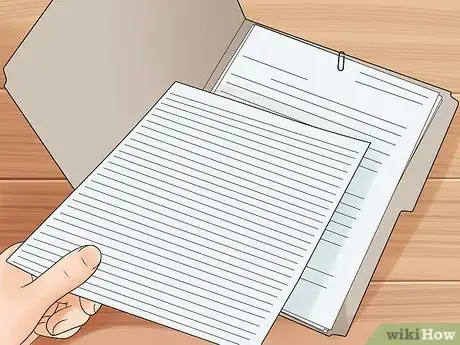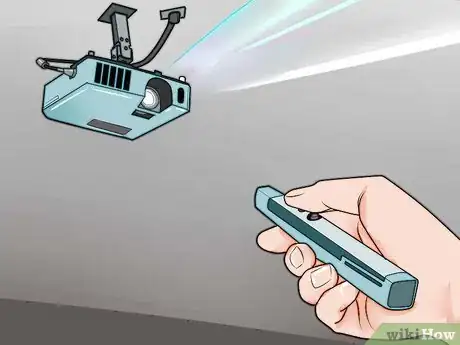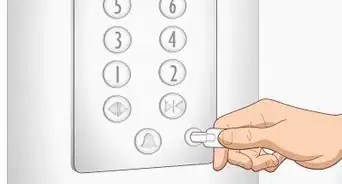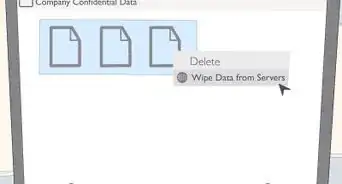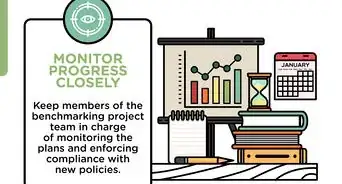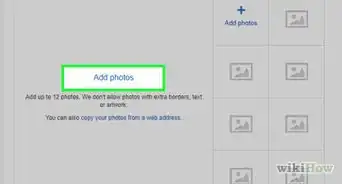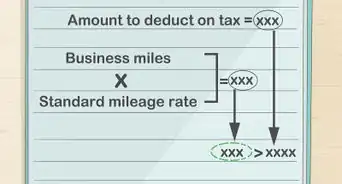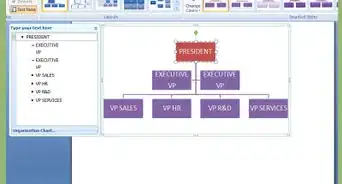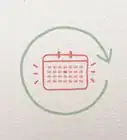This article was co-authored by Michael McCutcheon, PhD. Dr. Michael McCutcheon is a career coach, psychologist, and award-winning public speaker who specializes in procrastination elimination, goal achievement, and increasing life satisfaction. With a background as a counseling psychologist, he guides clients toward becoming more aware of their desires and anxieties to break old patterns, create new habits, and achieve life-changing results. He also helps clients improve organization skills, embark on a new career, get promoted, get admitted into graduate schools, and transition from school to the working world. He is a published author and lecturer in graduate psychology courses at New York University (NYU), a position he has twice won the Teaching Award (2014 & 2019). His work has appeared in the press as a lifestyle and career expert for The Washington Post/The Associated Press, The New York Post, Scholastic, Lifehacker, and The Coca-Cola Company. He has served as a contributing writer for Out Magazine and featured panelist on National Public Radio (NPR).
There are 8 references cited in this article, which can be found at the bottom of the page.
wikiHow marks an article as reader-approved once it receives enough positive feedback. In this case, several readers have written to tell us that this article was helpful to them, earning it our reader-approved status.
This article has been viewed 49,599 times.
Presenting a business proposal requires more than simply reading a transcript of the proposal text. Gaining the confidence of your audience requires tact, research, and a whole lot of preparation. If done correctly, your presentation can inspire your listeners to adopt your proposal.
Steps
Preparing the Proposal
-
1Research your audience.[1] Who are you making the proposal to? Who are their competitors, clients, or customers? Are they inclined to respond favorably to your proposal, or will you need to do some convincing?[2]
- If possible, talk to someone who has already seen the proposal, and gauge their interest.
- Check recent news stories which indicate the current financial state of the company or individual you're targeting.
- Think about the audience's values, goals, and ideals. Your proposal should address not just their economic needs but their corporate mission, too.
-
2Know your facts. Be sure your proposal is backed by solid numbers and data. Mistakes will only embarrass you and hurt the chances of your proposal being approved. Have a proofreader help you verify everything.Advertisement
-
3Type your proposal neatly. Print enough copies to let everyone in attendance receive one. Use high-quality paper, and include your name or the name of your business on the header. Have each copy professionally bound.
-
4Write your proposal with inspiring, optimistic language. Don't make your audience guess what you're trying to propose. Be direct, clear, and concise in your presentation. When you address costs or challenges, frame them in a way that points out how not following your proposal will result in even greater costs. [3]
- Your written proposal should not be identical to your oral presentation. Simply reading the proposal word for word will bore your audience. Your oral presentation should use the proposal text as a foundation but should also expand on your main points without lingering on every detail.
-
5Use a checklist. Pay close attention to all requirements on the proposal-development (RFP) checklist. Keep in mind the submission deadlines, and try to turn in your proposal before it's due.
- An improper or incomplete proposal submission may jeopardize your chances of not only having your proposal approved but also receiving future RFPs. Use care when crafting your submission.
-
6Practice your presentation as much as you can.[4] Repetition is the best way to increase your confidence.[5] Go over the entire proposal several times, and draft notes for your oral presentation as needed. Carefully memorize the key points, and visualize how you will introduce each. [6]
- Rehearsing your presentation in front of a test audience of friends or family will not only give you great practice but might also yield some feedback you can use to fine-tune the presentation.[7]
- Knowing your presentation and proposal inside and out will boost your confidence during the actual presentation.[8]
Making the Pitch
-
1Summarize the important points. Don't just read the proposal word for word. Your audience will have the text before them. Your job is to reinforce the main points and emphasize why your proposal should be selected.
- This is especially important when conducting an RFP presentation.
-
2Use visuals. With PowerPoint, Prezi, or a similar program you can keep your presentation focused and smooth. Graphics, key phrases, and statistical charts will help illustrate why your proposal is a winner.[9]
- Slide shows can help listeners retain information and better understand the main points of your proposal.
- You can use the slide show to supplement or replace your own notes. They can keep you on track and keep your audience engaged.
-
3Relax. If you're nervous, you won't speak well and may stumble over crucial points in your presentation. Your audience will sense if you are uncomfortable and might interpret it as a lack of confidence in your own proposal.
- Before you begin, try breathing in and out slowly for a while.
- Assume your audience is receptive, not hostile, to your proposal.
-
4Speak in a clear, audible voice. Don't yell, but raise your voice enough to be audible to everyone. A confident, authoritative tone will command your audience's attention and respect.
- Avoid interjecting filler words like "uh" or "um" into your presentation.
-
5Smile at key moments. Especially during your opening remarks, a smile will help the audience warm to your message. Be genuine, but don't overdo it, or your audience may think you lack substance.
Sealing the Deal
-
1Close your presentation with a solid punch. Reiterate your main points in a simple, straightforward way. Make it clear that your proposal is the most advantageous course of action. Use a story, demonstration, or illustration to inspire your audience to take the next step and adopt your proposal.[10]
-
2Solicit questions and concerns. If anyone has reservations, you should do your best to lay them to rest. Be ready to clarify any points of potential confusion and assuage any worries. [11]
- If you get an off-topic or difficult question, address it honestly, but artfully try to redirect the question back to why your proposal is a good one.[12]
-
3Thank the audience. Their time is valuable. Offering genuine appreciation for their attention and patience is an important part of closing your presentation.
-
4Follow up with the interested parties. Give your audience a day or two to consider what you have proposed, then send each individual a friendly email or phone call asking whether they had spent any time thinking about your pitch. Don't expect a quick response to your presentation, but don't let them forget about your proposal either.
Expert Q&A
Did you know you can get expert answers for this article?
Unlock expert answers by supporting wikiHow
-
QuestionHow can I be more confident during my presentation?
 Michael McCutcheon, PhDDr. Michael McCutcheon is a career coach, psychologist, and award-winning public speaker who specializes in procrastination elimination, goal achievement, and increasing life satisfaction. With a background as a counseling psychologist, he guides clients toward becoming more aware of their desires and anxieties to break old patterns, create new habits, and achieve life-changing results. He also helps clients improve organization skills, embark on a new career, get promoted, get admitted into graduate schools, and transition from school to the working world. He is a published author and lecturer in graduate psychology courses at New York University (NYU), a position he has twice won the Teaching Award (2014 & 2019). His work has appeared in the press as a lifestyle and career expert for The Washington Post/The Associated Press, The New York Post, Scholastic, Lifehacker, and The Coca-Cola Company. He has served as a contributing writer for Out Magazine and featured panelist on National Public Radio (NPR).
Michael McCutcheon, PhDDr. Michael McCutcheon is a career coach, psychologist, and award-winning public speaker who specializes in procrastination elimination, goal achievement, and increasing life satisfaction. With a background as a counseling psychologist, he guides clients toward becoming more aware of their desires and anxieties to break old patterns, create new habits, and achieve life-changing results. He also helps clients improve organization skills, embark on a new career, get promoted, get admitted into graduate schools, and transition from school to the working world. He is a published author and lecturer in graduate psychology courses at New York University (NYU), a position he has twice won the Teaching Award (2014 & 2019). His work has appeared in the press as a lifestyle and career expert for The Washington Post/The Associated Press, The New York Post, Scholastic, Lifehacker, and The Coca-Cola Company. He has served as a contributing writer for Out Magazine and featured panelist on National Public Radio (NPR).
Career Coach & Psychologist
Warnings
- Do not take beta-blocker drugs in an attempt to relax before your presentation. You run the risk of becoming a little too relaxed and doing or saying something you'll later regret.⧼thumbs_response⧽
References
- ↑ Michael McCutcheon, PhD. Career Coach & Psychologist. Expert Interview. 14 October 2020.
- ↑ https://www.entrepreneur.com/starting-a-business/7-steps-to-a-winning-business-proposal/299681
- ↑ http://blog.quoteroller.com/business-proposals-how-to-write-guide/
- ↑ Michael McCutcheon, PhD. Career Coach & Psychologist. Expert Interview. 14 October 2020.
- ↑ Michael McCutcheon, PhD. Career Coach & Psychologist. Expert Interview. 14 October 2020.
- ↑ http://www.fripp.com/selling-your-way-to-success-how-to-present-your-proposal-at-an-executive-meeting/
- ↑ Michael McCutcheon, PhD. Career Coach & Psychologist. Expert Interview. 14 October 2020.
- ↑ Michael McCutcheon, PhD. Career Coach & Psychologist. Expert Interview. 14 October 2020.
- ↑ Paul R. Timm, How to Make Winning Presentations, https://books.google.com/books?id=qqScv8LU9noC&lpg=PP1&dq=winning%20presentations&pg=PT60#v=onepage&q=winning%20presentations&f=false
- ↑ Thomas Leech, How to Prepare, Stage, and Deliver Winning Presentations, https://books.google.com/books?id=GEJn-UPf1cEC&lpg=PP1&dq=winning%20presentations&pg=PA80#v=onepage&q=proposal&f=false
- ↑ https://hbr.org/2010/11/how-to-get-their-approval.html
- ↑ https://hbr.org/2010/11/defend-your-research-people-often-trust-eloquence-more-than-honesty/ar/1
About This Article
To present a business proposal, make sure to speak in a clear, audible voice to command your audience’s attention, and avoid using distracting filler words like “uh” and “um.” Additionally, emphasize the main points rather than reading your proposal word for word, since your audience will have the text before them. You should also use visuals, like PowerPoint slide shows, to help the audience have a better understanding of your main points. Then, end your proposal by reiterating your main points in a simple, straightforward way. For more advice, like how to write your proposal with inspiring, optimistic language, keep reading!





